So that’s it. After 120 years of history, Geauga Lake crashed and burned in seven, with Wildwater Kingdom following closely behind. The new millennium and the Six Flags Ohio moniker were the beginning of the end for the little Ohio park. What exactly went wrong? Keeping in mind that Geauga Lake’s downfall and closure are the result (and the blame) of many, many people and ideas and strategies, here are a few guesses.
1. Over-expansion
Definitely the number one culprit, Six Flags's idea to supercharge the park was not an altruistic one. Original plans called for an aggressive expansion of Six Flags Kentucky Kingdom in Louisville. The park’s major competitor, Paramount’s Kings Island, launched a pre-emptive strike to combat that expansion by investing $40 million of their own into a new land and three new headlining rides. (To give you a sense of the time frame, one of those headlining rides was 2000's disastrous Son of Beast, the subject of its own Lost Legends entry.) Six Flags relented and left the Kentucky park to wither, instead shifting investment to their new Ohio venture, installing four major coasters in two years...
The idea was not to gift Northeast Ohio with investment. Plain and simple: it was to defeat Cedar Point. The reigning coaster capital of the world was decidedly ahead in the arms race of the era (now remembered as the Coaster Wars), and Six Flags sought to combat that with Worlds of Adventure. The influx of coasters might’ve evened out the statistics, but the artificial growth spurt put the park way in the red. It was a big risk to hope that the investment would be worth it.
In the end, we can begrudgingly admit that Cedar Fair was actually doing the right thing by paring the park back down to a local family park instead of clinging on to mega-destination dreams. It just didn’t read that way to locals who watched the company move in like vultures and pick the place apart while Cedar Point flourished. And then they went and ruined any goodwill by closing it altogether, as if no park of any size could reasonably exist there despite 120 years of history saying otherwise.
2. Bigger is not better
Different from over-expansion, we’re talking here about the sheer massive size of Worlds of Adventure. At about 700 acres altogether, the mega-park was literally created by building a bridge between a full-sized Six Flags and a full-sized SeaWorld. Consider the scope of it: Disneyland Park is about 70 acres (or one-tenth the size) while the garganuan Animal Kingdom is 500 (including the giant safari area traversed by truck.) Conceptually, it was brilliant and kind of incredible. But the reality of walking around the park was staggering. Consider also that creating one theme park out of two meant that Worlds of Adventure had two massive parking lots. Two main entrances. Two Guest Service centers. Two lost-and-founds. Two main gift shops. Two everything. It was not unusual for guests to end their day exhausted and find themselves in the wrong parking lot on the wrong side of the property.
And even if the park’s physical property doubled, it did not double the park’s infrastructure. Two local parks might combine to a mega-park on paper, but their facilities don’t. Restrooms and restaurants and internal facilities and queues and pathways were built for local crowds. Six Flags begged for crowd levels to rival Cedar Point's, and they got them! The massive groups that descended on Worlds of Adventure in its first years were simply more than either park was meant to handle, overwhelming the infrastructure. Cramped, crowded, and unprepared. Those were the words used to describe Worlds of Adventure’s premiere seasons. There wasn’t enough of anything, and everything was too small.
3. Six Flags’ management
Six Flags in the early 2000s was much different than the Six Flags of today. Concentrated on coasters and not much else, Six Flags parks at that time were infamous: poorly maintained, poorly staffed by poorly prepared employees, and poorly run. On a corporate level, it was all about massive rides. Six Flags did exactly as expected of them by pushing four massive coasters into what had been a charming family park of mild thrills. And there they stopped. In their effort to compete with Cedar Point, they forgot just about everything else that a winning park needs. A de facto policy of the company at the time was, “Build it and they will come.” And they did come to see the new spectacular park near Cleveland. Trouble is, they didn’t come back.
Six Flags’ financial position also lead to unusual business choices. At the time, their strategy for all of their properties was simple: admission was dirt-cheap. A season pass to Worlds of Adventure (which included admission to all Six Flags parks, by the way) was $49.99. The strategy was to pack the park by dropping admission to fatally low prices, then charge for games, food, parking, snacks, and toys. “If we can just them in the park,” they seemed to think, “then we’ve got them.” The plan only exacerbated the "Bigger is not better" problem, above, and attracted crowds from Cleveland who were brought in via an intentional bus line that Six Flags lobbied for. Like it or not, the park was quickly identified as a place families didn't care to be, packed with roving gangs of unaccompanied teenagers whose $50 season passes doubled as free babysitting all summer long.
As the composition of the park's visitors changed, the parents, grandparents, and locals families who had made Geauga Lake and SeaWorld their homes away from home for generations bailed.
Zooming out from the Worlds of Adventure property, Six Flags as a whole was drowning under massive debt when they sold the park in 2003. The rapid and insatiable expansion of the brand in the early 2000s had seen their property count swell to unprecedented numbers, and the issues detailed above seemed to plague most of them. Six Flags as a whole had expanded too quickly, and with the wrong underlying principles at their foundation.
It likely didn't take long for them to see that their investment in Ohio was not fruitful. To reiterate: Six Flags Worlds of Adventure did get the record crowds they'd hoped for. But those visitors didn't come back the next year. Or the year after. Six Flags was in trouble, and they needed to offload the inflated Ohio property as fast as they could. To put it into perspective, Six Flags inherited Geauga Lake and spent about $60 million to turn it into Six Flags Ohio. They then bought SeaWorld Ohio for $110 million – a relative steal. Just three years later, Six Flags sold the entire Worlds of Adventure complex (the combined marine park, ride park, and water park) for $145 million… In other words, they sold it at massive loss out of desperation. They unloaded their European parks and many U.S. parks shortly thereafter, and even filed for Chapter 11 bankruptcy. They've only now re-emerged as a strong company that has almost nothing in common with the Six Flags that operated the park in Ohio.
4. Cedar Fair’s management
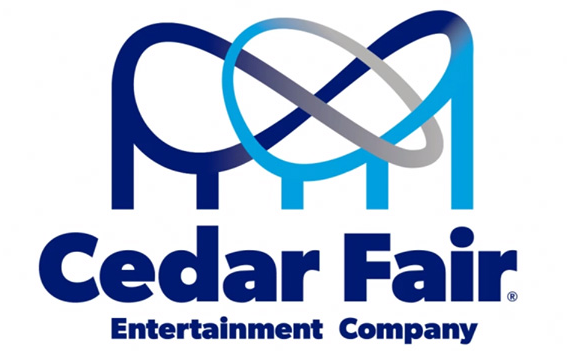
When Cedar Fair took over the park in 2004, they were determined to do things differently. They publicly tried to de-emphasize thrills and recast the park as a family one, just as it always had been before Six Flags' overblown expansion. It was the right move, and the direction the park probably should’ve been heading in. Six Flags’ time at the helm alienated the many generations who grew up there. Humongous roller coasters aside, the very atmosphere of the park felt changed when the park was suddenly overrun by an influx of thrill-seekers and teenagers.
Cedar Fair may have been right to turn the clock back. They just took it too far, and made their own foolish mistakes in their rush to undo the park's rapid growth. Still-burnt fans call them greedy. Maybe. There's just no good way to explain to locals why a brand-new and groundbreaking roller coaster like X-Flight was being removed so that another park could have it.
What was probably the biggest hit to Geauga Lake's future had nothing to do with the Ohio park's performance: in 2006 – just two years after purchasing Geauga Lake – Cedar Fair expanded big time. Paramount Parks (a competing chain of five regional theme parks owned by CBS) went up for sale. Apparently, then-CEO of Cedar Fair Dick Kinzel was so enamored with Ohio's Paramount's Kings Island, he decreed that Cedar Fair would buy the Paramount Parks come hell or high water. They met both when Cedar Fair paid $1.24 billion for the chain (a figure that many analysts agree was well above Cedar Fair's means), and the company was plunged into massive debt from which they're only now recovering.
Cedar Fair's game-changing purchase of the Paramount Parks almost doubled their park lineup, and this massive purchase required immense reorganization. First, the legacy and Paramount Parks would need integrated together infrastructurally as ticket systems, POS systems, pass systems, and more had to change. Just as importantly, Cedar Fair at once had to set out absorbing the former Paramount Parks into their own brand. That meant the hasty removal of any movie themes within the parks. (If you think Cedar Fair's de-branding of Geauga Lake was bad, imagine nearby Kings Island, which lost of the most incredible, well-themed rides ever to grace a regional theme park, TOMB RAIDER: The Ride.)
Languishing under the debt from the Paramount Parks purchase and still investing big money into tweaking those parks, Cedar Fair was ill-equipped for the absolute financial meltdown of 2007 recession, which hit at just the wrong time for the company.
Cedar Fair seemed to make their own desperate decisions as the chain struggled to make ends meet. Put simply:
- Geauga Lake may have just been the newest and easiest to part with when times got tough. The recent purchase of the Paramount Parks overshadowed the also-new Geauga Lake.
- Eliminating Geauga Lake also happened reduced competition to Cedar Point.
- Closing the park allowed Six Flags’ over-expanded coasters to be re-distributed through Cedar Fair’s chain.
On paper, it was a win-win.
In hindsight, even Cedar Fair’s management would probably admit to big mistakes in closing Geauga Lake, and especially in the way they closed it. Sometimes decisions sting in the present, but make sense in retrospect. Geauga Lake’s closing still seems absurd since Cedar Fair manages tiny little parks like Michigan’s Adventure and Valleyfair that even a pared-down Geauga Lake would’ve fit nicely with. There's no reason Geauga Lake couldn't have been inched back down to a charming family park. It wouldn't have been ideal and locals would probably never forgive the death of SeaWorld, but at least there would still be a park to see.
5. Location, location, location
Despite brochures advertising the park as being located in Cleveland, the park was actually in Aurora, Ohio, a tiny town about 40 minutes from the city on a good traffic day. No interstates pass by, so a trip to the park was a trip along state routes and two-lane county roads through small Ohio towns amid vast expanses of nature. For most of the park's century-long life, it had been the people of those towns and the surrounding region who had visited the park – a complimentary relationship that had made it so successful.
The park’s sudden growth to Worlds of Adventure (and its subsequent national advertising campaign) was quite literally overnight, and at once those little towns exploded in construction, hoping to widen their tiny roads to five-lane highways to prepare for the national tourists who would flock to the park. Locals were no longer the target market, yet it was their towns that were being uprooted to accomodate this new mega-park.
And guests who did travel from neighboring states to Worlds of Adventure were able to stay in the many, many hotels that popped up around the park… Err, wait… Located in the middle of rural Ohio and instantaneously shifted from a local park to a marketed destination on par with Cedar Point, there was no time for hoteliers to even try to open locations near the park. A motel down the road got to be Six Flags’ official hotel, if only because there was almost nothing else. There were a handful of hotels, sure, but nothing to support the theme park resort that had appeared. So while Cedar Point visitors can choose from a half-dozen official, partnered hotels and dozens more in the area that had grown with the park over a century, Worlds of Adventure had almost nothing... certainly not enough to handle the huge crowds. That's the price of shifting the marketing from Northeast Ohio to the entire country...
Location didn't help Wildwater Kingdom much, either... A standalone water park in Northeast Ohio didn't seem the smartest business plan, and rumors surfaced every single year that the tiny water park would follow in its predecessor’s footsteps and quietly close for good at the end of the season. By time its eventual closure was announced in 2016, it had gone a full decade without a notable investment.
Saying goodbye
Locals may never forgive Cedar Fair for what they did to Geauga Lake. To be fair, though, it was just a nail in a coffin that had been closing for some time. For the reasons above, Worlds of Adventure might have been doomed. That doesn’t necessarily mean Geauga Lake was. Despite Cedar Fair’s last comments on the subject, Northeast Ohio could support a family amusement park. Indeed, it did for 120 years.
As it is now, the case of Geauga Lake is closed. The property is flattened. Now, even the remaining Wildwater Kingdom is closed for good. Any hopes for a theme park operator to purchase the land and cobble together a nice, quiet family park can be pretty quickly abandoned, as Cedar Fair would never allow the property to be sold to any entity hoping to recreate an amusement park of any size unless they're willing to pay well over its value.
It’s just especially a shame to see the entire infrastructure totally leveled. Truly like a vulture came through and picked it clean. It’s not even one of those ghostly-looking abandoned parks. It’s flattened. The knowledge that the overgrown paths of the park still weave around concrete foundations is haunting enough.
This is not the way Geauga Lake's story should end. And yes, it’s one of countless amusement parks in the world that were cut down in their prime, all of which have dedicated and loyal locals who will never forget their own parks' tragic stories. The difference is that Geauga Lake went out with quite a bang, not as a shriveled, sad underdog. The unique circumstances and story of this park's instant rise to international headlines, its fusion of two leading park brands, and its dismal destruction over a decade give it a story that is so unlike anything that's ever happened before or would ever happen again.
Fans of the park never did get their goodbye, and pangs of guilt still ripple through their stomachs because of it. Even for those who never saw this park or never knew it existed, a mile in the shoes of locals should be gutwrenching and tragic – what if this fate befell your local park?
Still, we'll always wonder how this...
... became this...
... in just five years.
For lots more information on Geauga Lake, Six Flags Ohio, and Six Flags Worlds of Adventure, visit Geauga Lake Today & Forever, a fan community turned memorial site that tracked the park’s growth and decline, including invaluable images and park maps that were used in this feature. All of the photos used in this feature are via Geauga Lake Today & Forever unless otherwise noted.
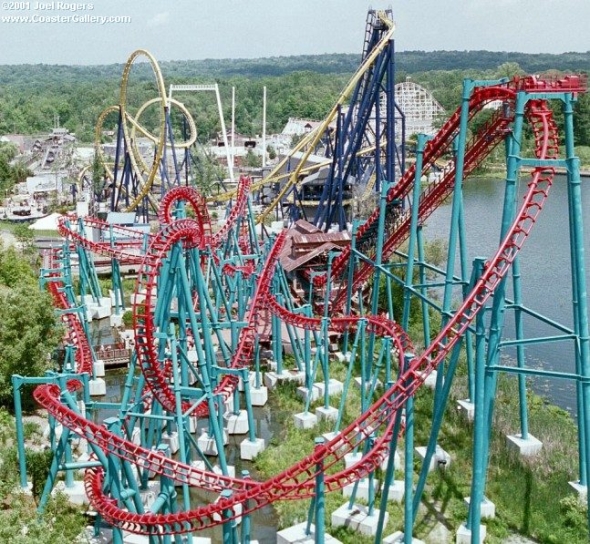
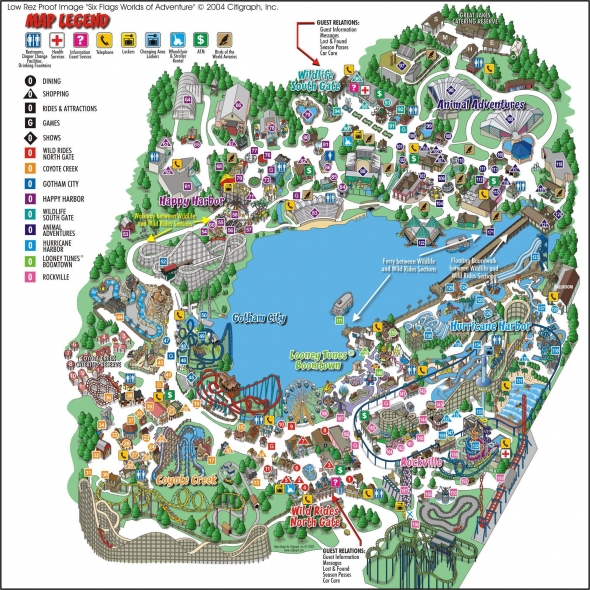
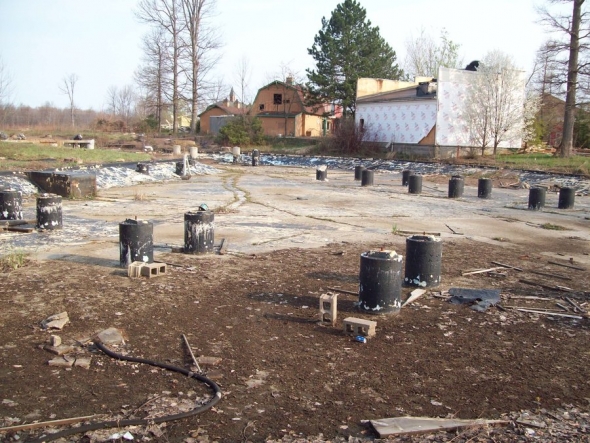
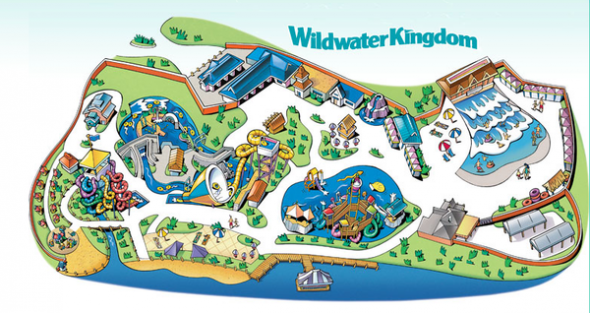

Comments
I would like to see the owner of pymatuming deer park expand here
ok heres a little known fact-the Kenny family-the family that originally owned kennywood-was at one point in talks to buy Geauga lake and turn it into the kind of park they wanted to turn kennywood into but couldn't due to land issues-one with some sort of hotel, a lot of the older rides that you cant find anywhere anymore, etc. but then for whatever reason they got out of the business. imagine if they had gone through with their plans.also in my opinion it used to be about providing family fun now its all about the all mighty dollar. such a shame really.
The Cleveland Indians played a game or two there on Sundays in early 1900s. Cleveland laws prohibited games on Sundays so the Cleveland team had to play outside of Cleveland or Cuyahoga County. I believe ball field was in the Sea World parking lot.
Greedy is the name of the game here in the USA, money, money, money, There is never enough for these people, ruin a great park that were good times for people and their families. Makes me sick, but I have to say while the park was there I and the family had many good times there and still remember the times we had there. For CEDAR POINT, not interested in driving there or paying to enter that place. It could burn down tomorrow and I could give a darn one way or the other. I an tired of the tactics used to undermine a good business set up to make people happy and enjoy a day with the family,I hope they are happy and enjoying what has been done for the all mighty dollar. I have found other places for enjoyment and don't need CEDAR POINT. WAIT 3 HOURS FOR A RIDE ARE YOU KIDDING ME, NO WAY THANK YOU. THERE IS A NICE PARK RIGHT UP IN ERIE PA. That is the ticket for me. Price is right and I can take food and drink in with me. Fits my bill for now and if not I will drive my classic car on cruises during the summer.
Geauga Lake was part of my childhood in the 70's. I remember going outside at 8am on the days we would go there and wait for everybody else to get in the car. Thanks for a great article.